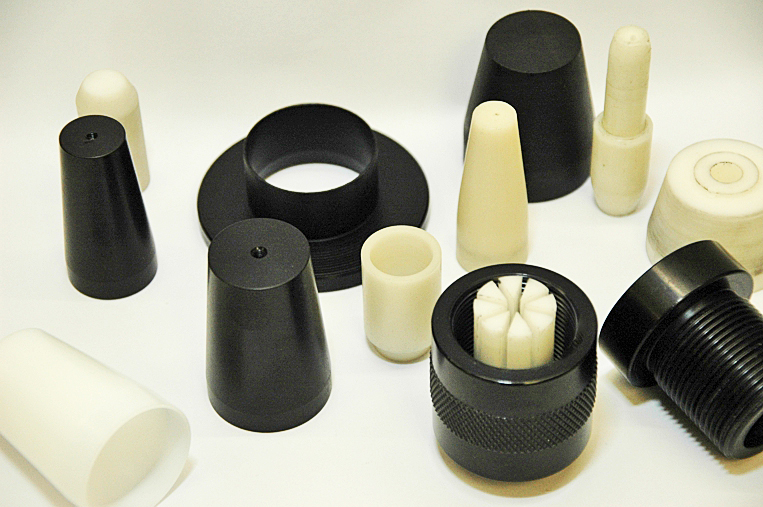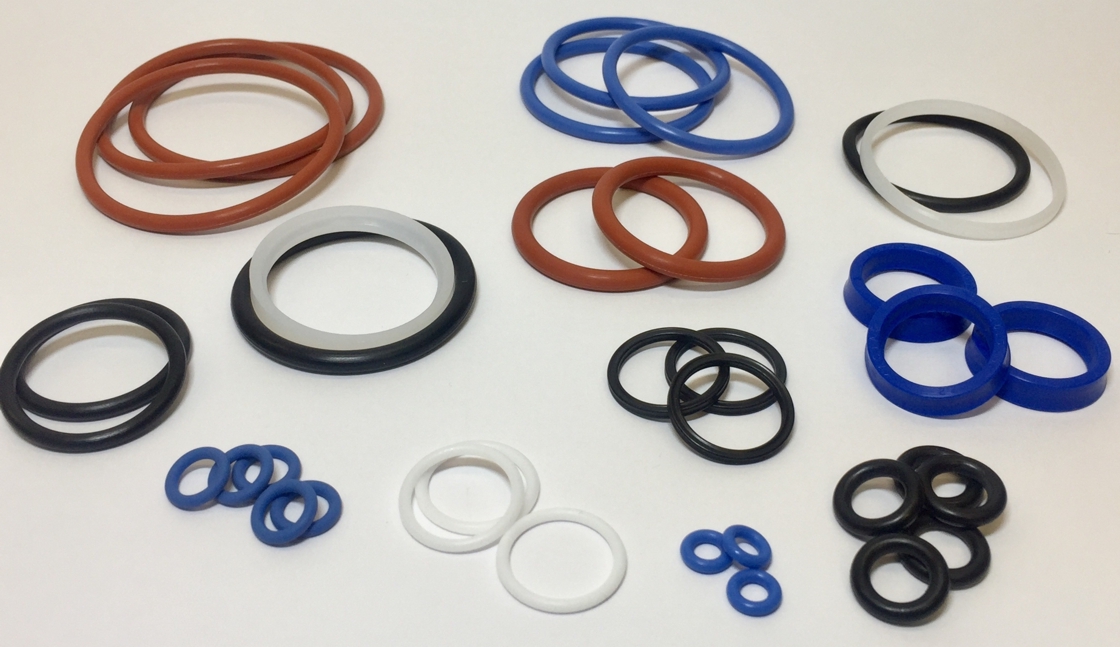This is what we have learnt about fitting hydraulic seals into our pumps.
They will be relevant to most other hydraulic equipment. We will add to it and are always happy to receive feedback.
Contents:
Three tips for easy hydraulic sealing before you start.
Things to beware when you’re stripping hydraulics down!
Our five big tips for fitting a hydraulic seal
Fitting a ptfe or uhmwp capped elastomer bearing seal
Fitting a ptfe or uhmwp capped elastomer piston seal
Fitting a hydraulic U seal into a bearing
How to fit hydraulic seals and what makes it easy.
Hydraulics seals – there’s so many different types. Many designs, lots of materials – and if you get the fitting wrong, you’re risking pump leakage, damage or even failure. So how do you make sure that you fit your hydraulic seals correctly?
Here at Sarum Hydraulics, we’ve been fitting seals to our Micropac pumps during manufacture and service for over thirty years. Fitting seals right is vital but we would say first try to design the seal housing to make life easy. So, we have added our quick tips on designing seal housings, thoughts on dismantling hydraulic seals and most important, our five tips for making sure that you’re fitting your hydraulic seals correctly into your hydraulic pump.

Proper installation tools make the job easy
Getting the right hydraulic seal and a housing that makes life easy.
Three tips that have always helped us up front on hydraulic sealing.
1. Specify your hydraulic seal for ease and security of supply
When you’re selecting seals at the design stage, think carefully. There are a massive number of hydraulic seals to choose from. We would try very hard to design using standard generic sizes and not “specials.” Quite simply, if a seal is unique to one supplier, you have nowhere to turn if it is suddenly on a 12 week lead time or quoted at five times the price. This seems a needless risk if it could jeopardise production.
2. Go to a specialist
Where are our first ports of call on seals? There are lots of great suppliers. We’re fans of DMR Seals on specialist hydraulic profiles or materials. For O rings, we rate Eastern Seals and Barnwell Services pretty highly. With a massive range of available sizes and compounds all offered with recent cure dates, that is what we need. [make sure you link out to these supplier’s websites]
Nowadays, a seal stockist must eat, sleep and breath seals in a big way rather than keeping just a few to complement other products. Go to a specialist.
3. An “open groove” design can be a winner all round.
If you are designing afresh, look very seriously at an “open groove” design as an alternative to a closed groove. Yes, there is quite often some modest increase in cost, but do think around the problem when designing. Machinists will love you, as they are machining a counter bore and not using a grooving tool to machine an undercut. It is easier to measure and inspect a counterbore than a groove (or “undercut”). Assembly technicians can see whether the open groove is clean.
Things to beware when you’re stripping hydraulics down!
Before the do’s, let’s start with three big don’ts in dismantling hydraulics. Maybe you are servicing kit, developing a product or simply have a production seal that leaks. Taking them out is inevitable.
1. Before you come to fit the seal, be careful not to damage a seal groove in getting the old seal out. If you do, we think you run the risk of the new one leaking immediately. A nasty scratch can’t be removed easily and you don’t really want to be engineering your way around careless damage. It is a waste of time.
2. Don’t re-fit a damaged seal. Whether it is mechanical damage, such as a gouge, a worn area or bits hanging off, seals aren’t “self-healing”, despite any folklore you have heard. If an elastomer is torn or worn, it won’t “flow” and heal the damage. Rubber doesn’t work like that. PTFE will flow, but our feeling is that it is wishful thinking to hope that it will be self-healing. Fluid finds a way through any imperfections. Be critical. Look for manufacturing imperfections in new seals like voids in the elastomer or two halves of the moulding tool not having lined up. Simply don’t fit it. Why risk product quality for a few pence? Reject the whole bag!
3. Cleanliness is everything. Don’t work in a messy and inherently dirty area. Hydraulics hates dirt. Sarum’s clean area has white work tops with nothing on them. We clean them down like a kitchen work top before assembly starts.
Our five big tips for fitting a seal
1. Keep your spare seals in labelled, clean bags. Measuring seals to check the size is nigh on impossible if, for example, you are trying to tell the difference between a BS014 and a BS906 O ring.
2. Use an eye glass or dentist’s mirror to check that the inside of a groove is clean and free of nasty strings of machining swarf or damage.
3. Seals like warmth during fitting. Dipping a seal in warm water will make it more flexible and easier to work with. A kidney shape is the easiest shape for a seal for fitting into a closed groove.
4. Build up a set of non-metallic tools for fitting seals. Dentists have special tools. Why not hydraulic seal fitters? At Sarum Hydraulics, we have a collection of tapered bushes for contracting seals, tapered rods for expanding seals plus half or quarter round picks for pushing seals into grooves. Installation tools MUST be non-metallic, or you will damage the seal.
5. Be organised if you are swapping out a leaking seal. Identify the job so that you can see what has been changed or not. Sarum Hydraulics will keep the defective seal until testing has taken place, just to help diagnostics if the problem then isn’t fixed.
That is probably a good start.
You can also find instructions for fitting a ptfe/uhmwp capped elastomer bearing seal [link to separate page], a ptfe/uhmwp capped elastomer piston seal [link to separate page] and fitting a bearing U seal [link to separate page].
Those are a few thoughts from 30 years of designing and manufacturing our Micropac pumps. Contact us with your take or to put us right.
Sarum Hydraulics Micropac® full range on www.sarum-hydraulics.co.uk A large range from our ex stock catalogue pressure test sets and dispensing pumps through to specialist 316 stainless hydraulics used for actuation, API systems for pressurized sealing, Ground Support and a massive range of other gear sold throughout the world.
If changing O rings is your interest, watch our you tube video!
Useful Links:
Not sure about Materials for seal. Read our application note based on our own 30 year experience here.
Eastern Seals on www.easternseals.co.uk and Barnwell Services on www.barnwell.co.uk . Just good suppliers who meet Sarum’s quite demanding needs.
DMR Seals on www.dmrseals.co.uk Machined seals available in a massive range of compounds and fitting industry standard housings are important for Sarum. DMR offer a strong technical back-up. They are good on moulded seals as well.
FPE have massive stocks of mounded seals. www.fpeseals.co.uk
Claron are very good on machined ptfe and other materials. The other side of the business does moulded seals. www.claron.co.uk


I just found this writing very useful. As to your mentioned things to attend to, we should not damage it or re-fit a damaged seal. I will bear that in mind and see to it that proper cleanliness is maintained.
Joy, Thank you so much for reading our article. I am glad that you have found it useful. Feel free to share it!
This is worth reading.Hydraulic Pumps is very important tp prevent from the leakage. We have the best Hydraulic Pumps Manufacturers.